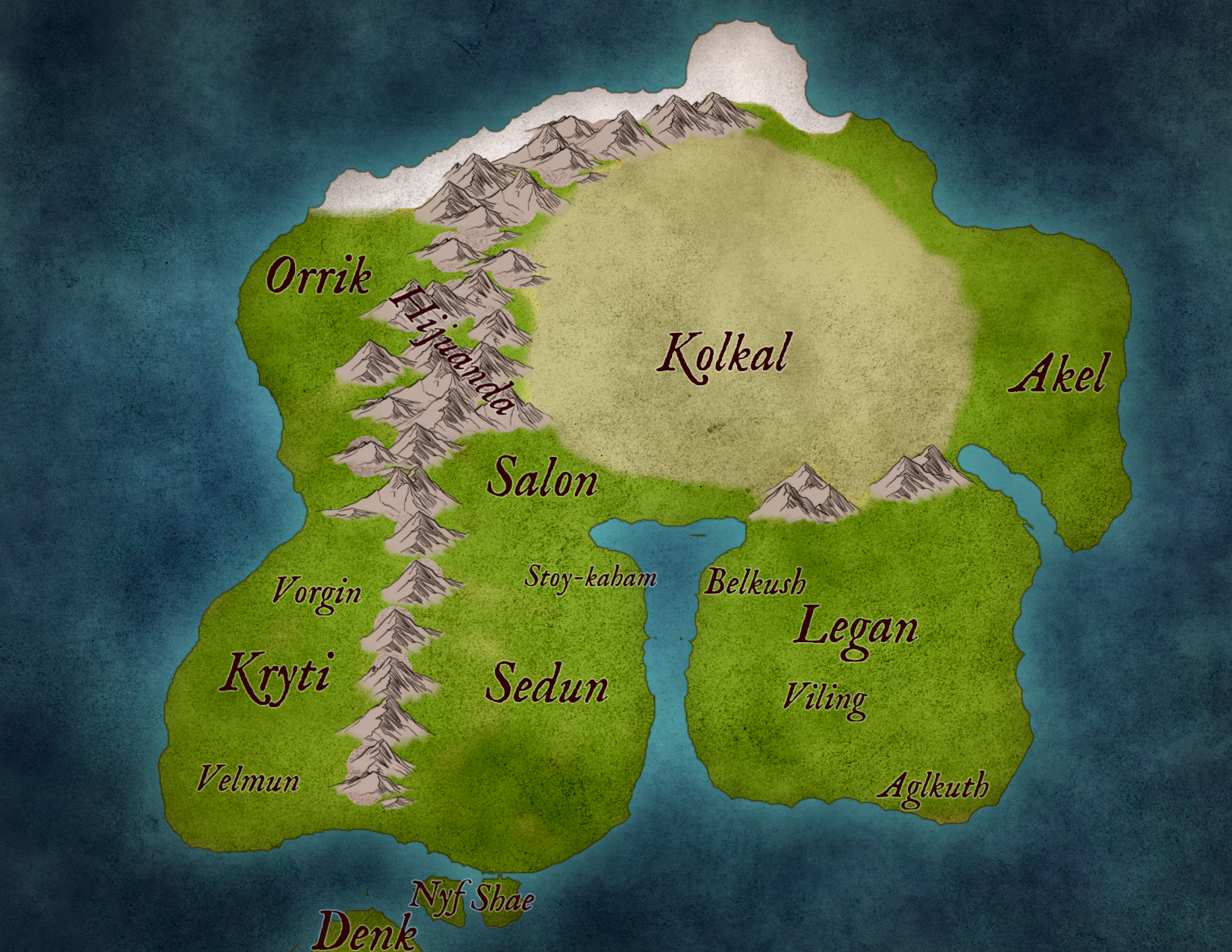The History of Ethernia
Ethernian History
- Early Happenings
- Isora Mezezi and Seduni Dominance
- Centralization and Expansion in the Kingdom
- Mexxerra Mezezi and the Modern Ethernian State
- The Contemporary Era
Early Happenings
Coalescence of Peoples and formations of Kingdoms.
The earliest Ethernian settlements of considerable size originated in Sedun. They first appeared nearing the 3rd century B.K. By the 4th century A.K. the region had been subjugated by the Mecojz-riding hordes of the Kolkal that they had relied on for their mounted troops. Within a cetury, however, their grip would loosen to the point that clans from the Hijuandag mountain range successfully seized power in the region. The region of Sedun would see a single clan, Ectique, rise to prominence. Ectique was a matrilineal clan where the nominal head was the chieftess and usually was the daughter of the previous chieftess. The Chieftess' spouse was called the Kinyuz and generally handled the army and campaigns during war. Later, when Ectique had dominated all of Sedun, there came a time known as "The Kinyuz Wars" where prominent men of the country married to relatives of the late chieftess tore the region apart in a bid to claim power. Even after the chaotic event, it was normal for the state to suffer through a few pretender claims every succession. Between the constant civil wars after the death of the chieftess and the constant pressure from the western kingdoms and mountain tribes, the state of Ectique was weakened over time. By 1027 A.K. a nomadic clan from the Kolkal invaded Ectique due to the Chief having married one of the daughters of Ectique. His wife ruled as the Khatun for nearly two decades, then passing on the throne, rather peacefully, to her daughter who soon gave birth to a child named Isora. When Isora was still a very young child her mother passed away at an early age. Her clan's own stability was shaking and thus the Seduni were able to reclaim the Chiefdom for another relative of the royal family. Isora's father, a man from Kolaskyva, was preoccupied with holding together the clan after the death of his brother-in-law so he betrothed Isora to the son of a powerful Seduni family with the intent of pressing her claim on the throne when she came of age. Isora proved to be a diamond in the rough, revealing herself as a bright student to her educators.




Comments